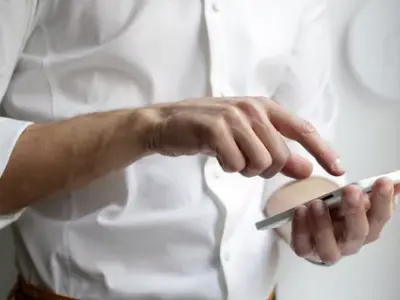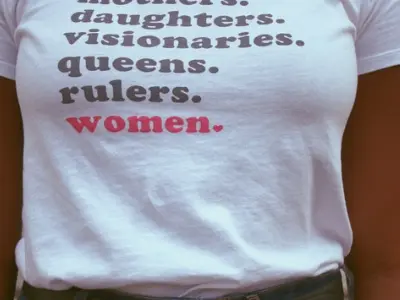Your first question when you begin a side hustle making shirts is how much to charge for shirts made with Cricut.
In this blog post, we’ll discuss how much to charge for shirts made with Cricut, some of those factors, and provide tips on setting a price that will allow you to make a profit while still satisfying your customers.
Read on for some tips on setting your prices and things to think about when making up those price tags (with your Cricut machine, of course!)
How Much to Charge for Shirts Made With Cricut

In general, you decide how much to sell each shirt for by adding up the materials, overhead costs, and labor then dividing it by the number of tee shirts in the design run.
Decide how much you want to get paid per hour for making tee shirts.
Time how long it takes for you to make a shirt. This time will go down as you get an assembly line method going for a run of shirts.
Add your materials up and divide that amount by the number of tee shirts you can make. Then add your labor cost to each shirt.
You can also add on small amounts to cover internet and other costs to sell.
Factors to Consider When Deciding What to Charge for Shirts
There are a few factors that you need to consider when setting how much to charge for shirts made with Cricut.
- The first is the cost of the materials. How much does it cost you to purchase the shirt, vinyl, and other materials needed to make the shirt?
- The second factor is your time. How long does it take you to design the shirt, cut out the vinyl, and apply it to the shirt?
- If you’re making Infusible Ink shirts, the costs are a bit higher and the results look like premium shirts. You can increase your prices accordingly.
- The third factor is your overhead costs. This includes things like the cost of running your Cricut machine and any other business-related costs (e.g., website hosting fees, marketing expenses, etc.).
- The fourth and final factor is market demand. How much are people willing to pay for a shirt like this? If you’re selling in a highly competitive market, you may need to lower your prices to stay competitive.
If you really want to make a go of your side hustle, learn about how to be competitive in a free market system.
There are several good strategies for pricing your merch, depending on where you sell.
Check out this related article: How Much Should I Charge for Sublimation Shirts?
Strategies for Setting Custom Shirt Prices

Now that you know the four factors you need to consider when setting how much to charge for shirts made with Cricut let’s move on to some specific pricing strategies.
Pricing Strategy 1: Charge By The Hour
One pricing strategy you could use is charging by the hour.
Simply figure out how much it costs you in materials and overhead costs, and then add your hourly rate.
For example, it costs you $15 in materials and overhead costs, and your hourly rate is $20. Your total price would be $35 ($15 + $20).
This price won’t sell a lot of ordinary shirts, but if your design is fantastic and totally unique, you can sell shirts for $35 to buyers in the premium market.
If you’re doing simple quotations or “word” tees, your material costs are very low and they’re quick to make.
You can snag buyers away from the regular tee shirt stores with competitive pricing.
Pricing Strategy 2: Charge Per Shirt

Another pricing strategy you could use is charging per shirt.
To do this, simply figure out your materials and overhead costs and then add a markup.
For example, it costs you $15 in materials and overhead costs, and you want to mark up your price by 50%. This means your total price would be $22.50 ($15 + ($15 x 0.50)).
Be sure your labor is covered when you do markup.
If you’re doing a full run of say, 20 shirts in a single design, you can set the cutter to maximize your vinyl and assemble them all at once.
In this case, your labor costs and material loss are much lower per shirt, so you can do a simple percentage markup strategy and come out with a profit.
This strategy doesn’t work well for custom orders because you have design time and vinyl loss for each project that won’t get paid for with a simple markup strategy.
Pricing Strategy 3: Charge A Flat Fee
A third pricing strategy you could use is charging a flat fee. To do this, simply figure out your cost of materials and overhead costs, and then add a flat fee.
For example, it costs you $15 in materials and overhead costs, and you want to charge a flat fee of $25. Your total price would be $40 ($15 + $25).
This type of pricing can work well if you want to charge a flat rate for every shirt in your booth at a craft fair.
Some people like to know that whatever shirt they pick will cost the same as any other.
However, unless you get your materials costs down to well under $15 per shirt, you won’t sell that many in the long run.
Pricing Strategy 4: Charge Per Square Inch
A fourth pricing strategy you could use is charging per square inch.
To do this, figure out the size of your design, and multiply that by your price per square inch.
For example, your design is 6 inches wide and 4 inches tall, and your cost is $0.50. Your total price is $12 ($0.50 x 24).
This is a strange way to price the shirts, but it can work well if you’re doing custom shirts like using sublimation ink to put someone’s family photo on a shirt.
You use more of your ink for a larger picture on the shirt, so you want to make sure that the material cost is covered when you print the shirt.
Depending on the materials you use, it could cost much more than 50 cents per square inch. This is simply an example of how you’d think about pricing the shirts.
Now that you know how much to charge for shirts made with Cricut, it’s time to start creating your Cricut ideas to sell!
Consider Your Market When Pricing Shirts Made With Cricut

What you can charge for your shirts has a lot to do with the market you’re in.
- If you’re selling online in a marketplace like Etsy, you’ll find the competition is stiff. Because there are sellers from all over the world, you may not be able to compete on pricing alone. You’ll need to have fantastic designs.
- If you’re selling at a craft fair, your prices can be quite a bit higher, though you have to keep in mind that your potential customers likely have a budget for the day in mind. Your shirts have to be good enough to convince them to spend a little of that budget on your shirts.
- If you get a spot in a boutique store you can charge much more per shirt, but a lot of that cost will be eaten up by consignment or space rental fees.
Read our related article on How to Sell Cricut Projects On Etsy for simple steps to start your shop!
Frequently Asked Questions:
Q: How Much Does A Cricut Machine Cost?
A: Cricut machines range in price from $129-$599, depending on your model.
You can find legacy models for cheap, though they aren’t supported by Cricut anymore.
You can find third-party software programs that will work with these legacy machines, allowing you to save a bundle on the supplies you need to start your shirt business.
Q: How Much Does It Cost To Make A Shirt With A Cricut?
A: Making a shirt with a Cricut will depend on the cost of materials and your overhead costs. Simple designs usually cost around $10.
Q: What’s The Best Technique for Making Shirts With Cricut?
A: The beautiful thing about Cricut is you can use quite a few different techniques to make totally unique shirts!
Use Cricut Infusible Ink to make permanently inked designs for a professional finish.
Use various types of printed and textured vinyl to make memorable shirts with your Cricut machine and EasyPress.
Check out this video to see how to use Infusible Ink sheets to make a quick and easy inked design.
Wrapping Up
As you can see, there isn’t necessarily the best way to price your shirts made with Cricut.
Some are so quick and easy to make that you can charge a very competitive price on larger runs.
Other techniques are labor-intensive so you’ll have to factor in more materials and extra time to make the shirts.
However, by using premium materials and creating premium designs, you can sell to a premium market.
